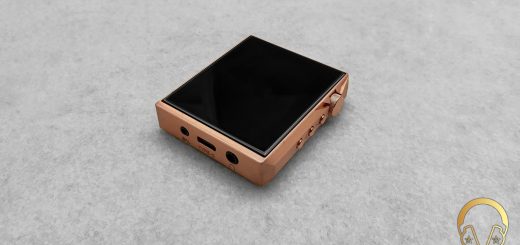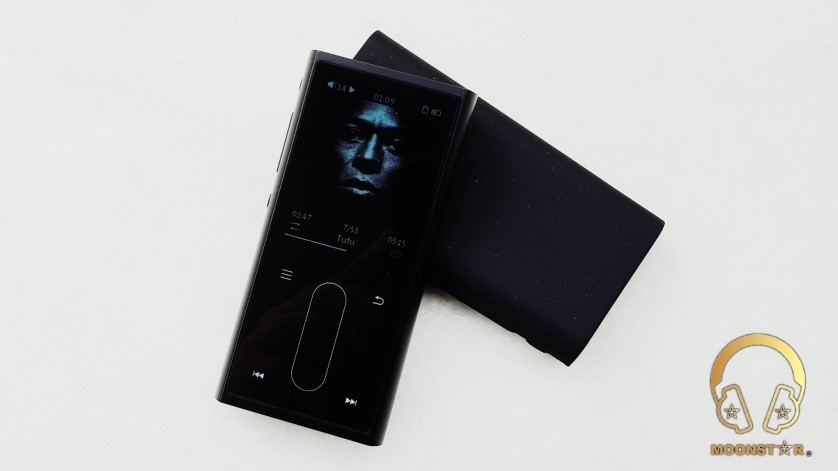iBasso DX320 DAP Review

iBasso DX320 DAP Review
Introduction:
iBasso is Chinese company that is specialized in the Portable Audio products such like Digital Audio Players (DAP), Portable Amplifiers and In-Ear Monitors.
The iBasso DX320 is the successor of the original DX300 Portable Digital Audio Player (DAP), which is one of my favorite devices when it comes to overall sound performance and hardware features. The DX320 comes with some very impressive specs such like ROHM’s BD34301EKV High-End DAC chip, a 8-core Qualcomm Snapdragon 660 SoC, 6GB (LPDDR4X) RAM & 128GB Rom, FPGA Master Technology, Patented Dual Battery Supply Structure, 6.5” 2340×1080 screen and Android 11 + Mango OS.

Disclaimer:
I would like to thank iBasso for providing me the DX320 as review sample. I am not affiliated with iBasso beyond this review and these words reflect my true and unaltered opinions about the product!
Price & Availability:
The current price of the iBasso DX320 is 1,599.00 US$. For more information’s please visit the link below;
Package and Accessories:
The DX320 comes inside a quite similar box that we have seen with the DX300. It is in dark blue and has a nicely soft textured surface with the iBasso brand logo on the top. This box has a cardboard sleeve in grey color with the iBasso DX320 Reference DAP branding on the top.
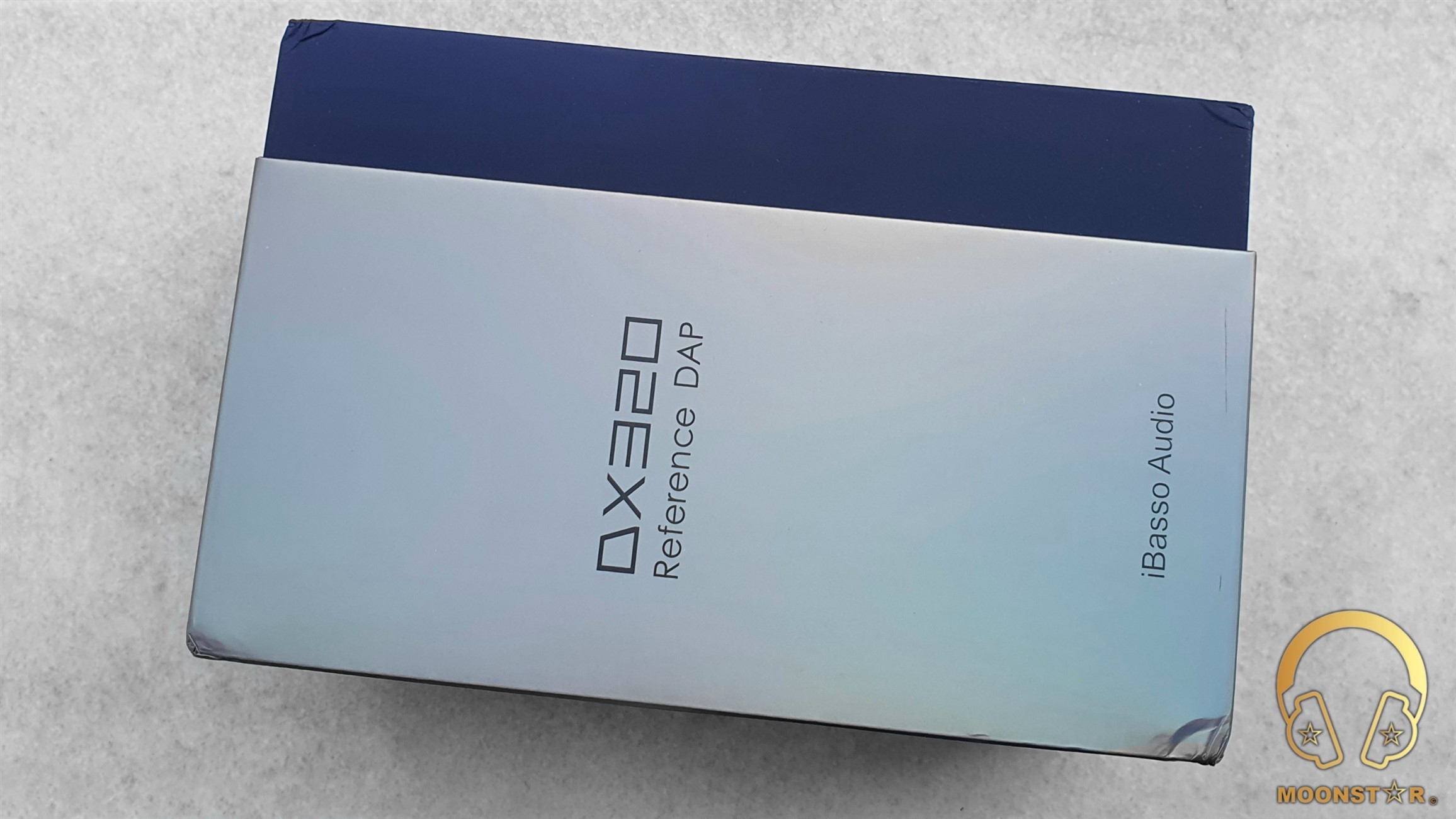
This box is containing the following items/accessories;
- 1 x iBasso DX300 Reference DAP
- 2 x Protective films
- 2 x Glass Protectors
- 1 x Leather case
- 1 x USB Type-C Charging/Data Cable
- 1 x Coaxial (SPDIF) Cable
- 1 x Burn-In Cable
- 1 x User Manual
- 1 x Warranty Card
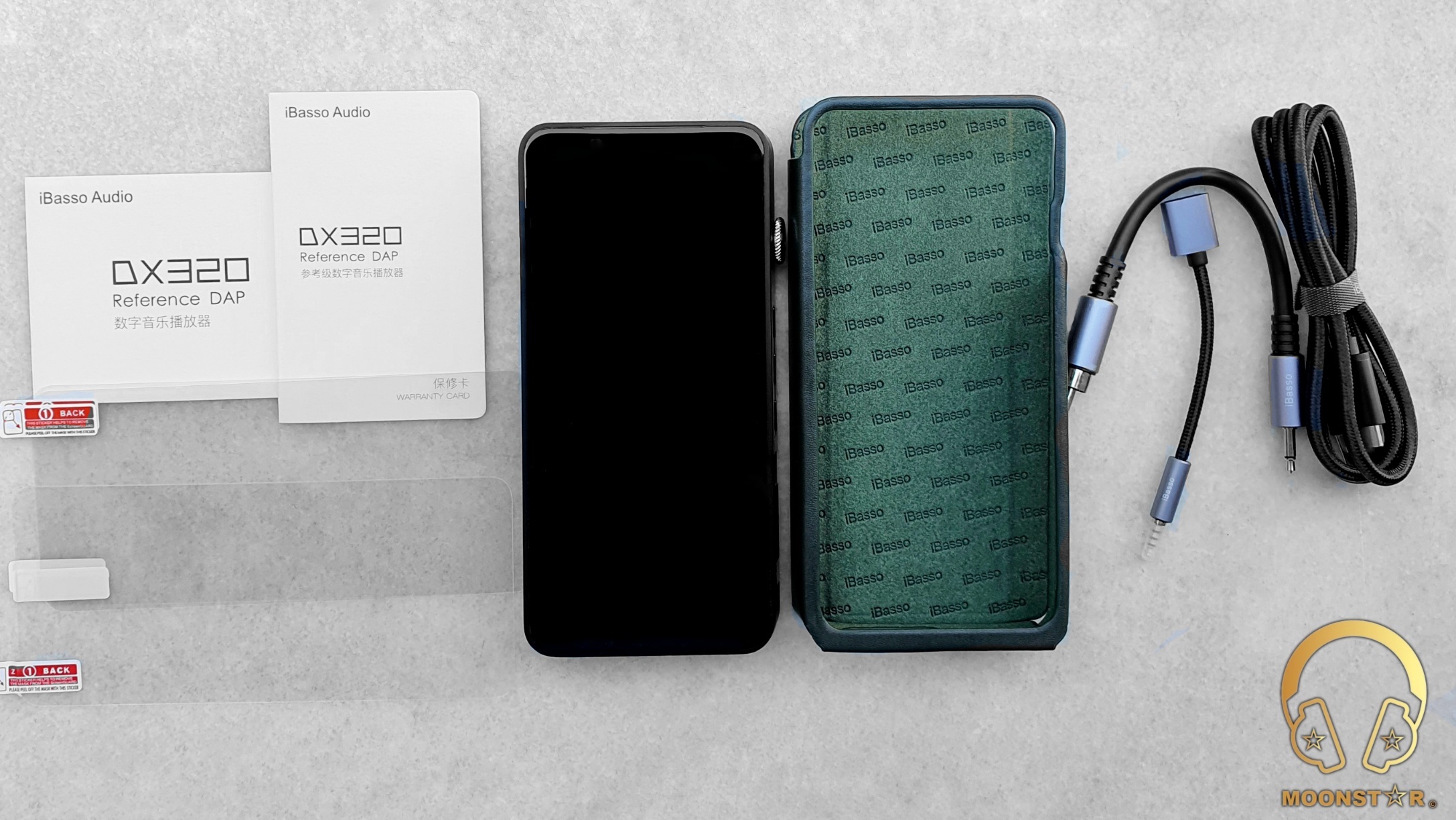
The leather case of the DX320 has a premium look and feel. It has a high quality workmanship with its inner surface of the case is silky soft with some nice iBasso patterns.

It is great to see that our feedbacks to change the leather case design have been taken into account by iBasso. The leather case is no more slippery and the volume knob can be used much more easily.
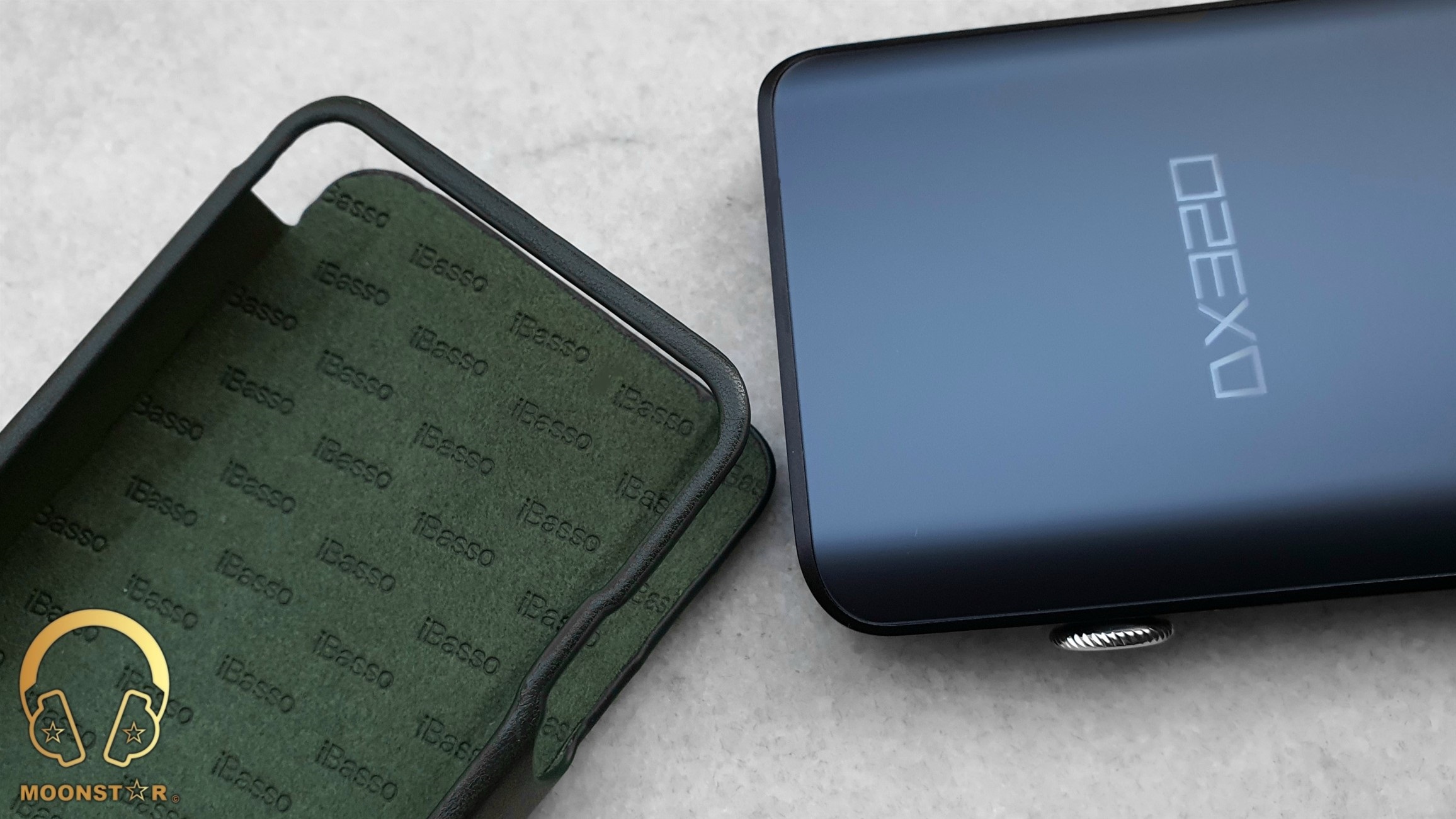
The glass protectors, protective films, burn-in and coaxial (SPDIF) cables are some nice addition.

Design, Buttons and Build Quality:
The DX320 is an impressive Digital Audio Player (DAP) that looks identical to the DX300, with exception of the multi functional volume wheel design and the two small semi transparent windows dedicated for a visual experience in use with the AMP13 with Korg Nutube’s.


The DX320 is a larger device compared to its smaller brothers like the DX160 and DX240 with dimensions of approx. 162mm*77mm*17mm and weights about 310grams. It is available in two different color options, which are Black and Blue like my review unit.
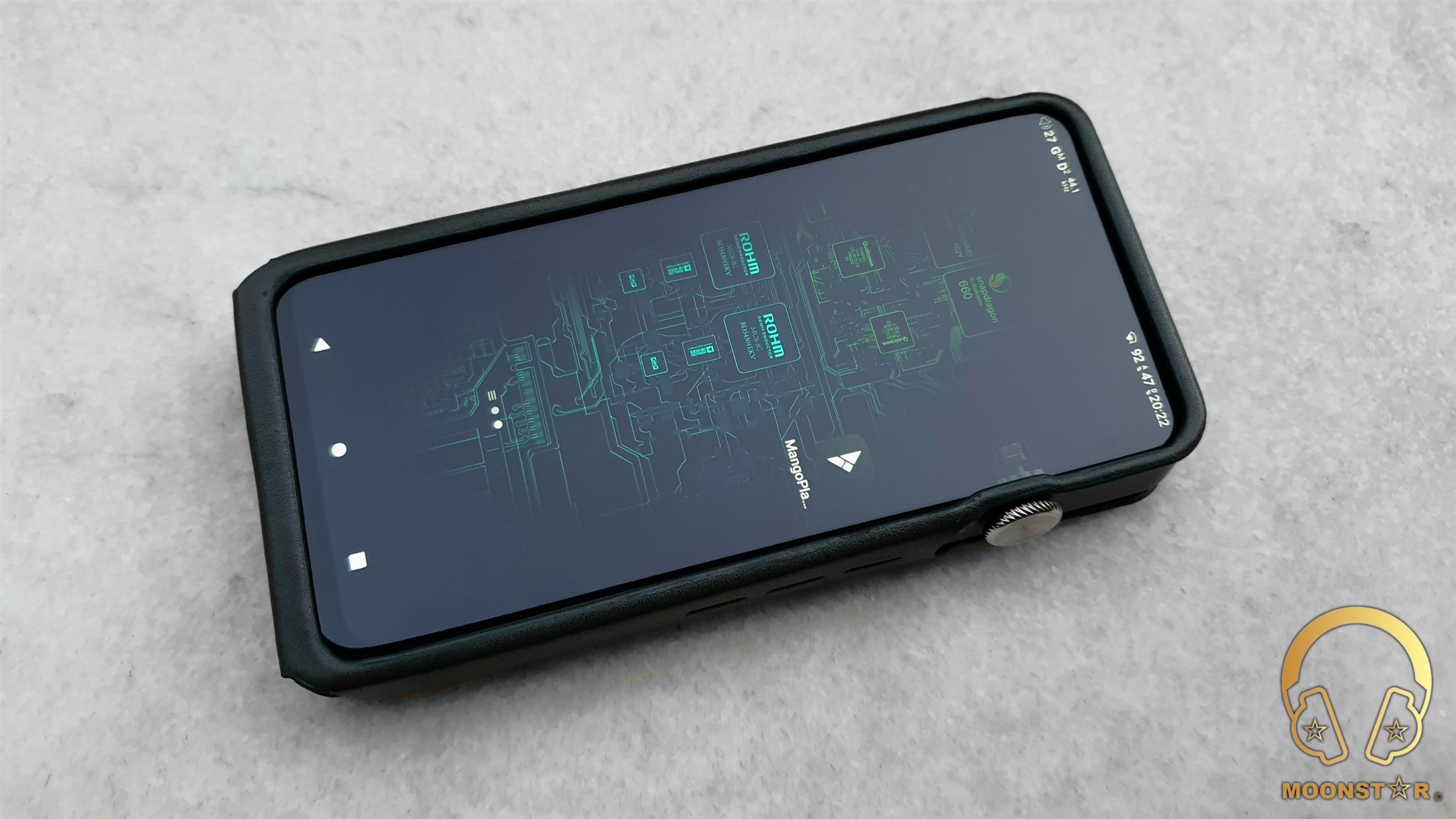
The main frame/chassis of the device is made of aluminum material that doesn’t show any imperfections such like gaps, burrs or any openings.
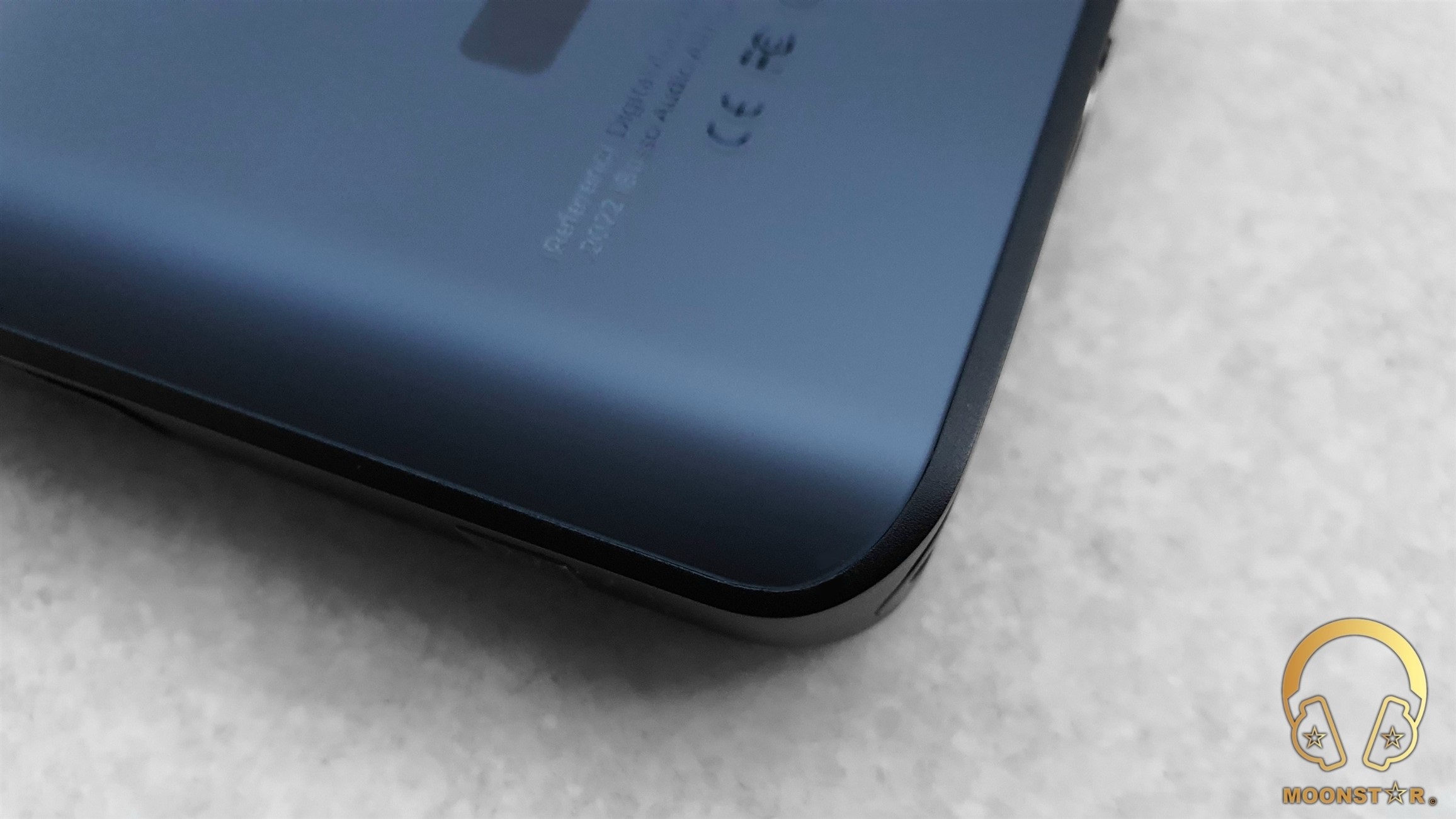
On the front of the device is the gorgeous looking 6.5″ IPS Touch Screen with a 19.5:9 aspect ratio. The screen has a decent resolution of 2340×1080 and a Pixel Density of 397 PPI that you can normally only find in modern Smartphone’s and Tablets. The screen is pretty sharp and colorful in terms of color reproduction.
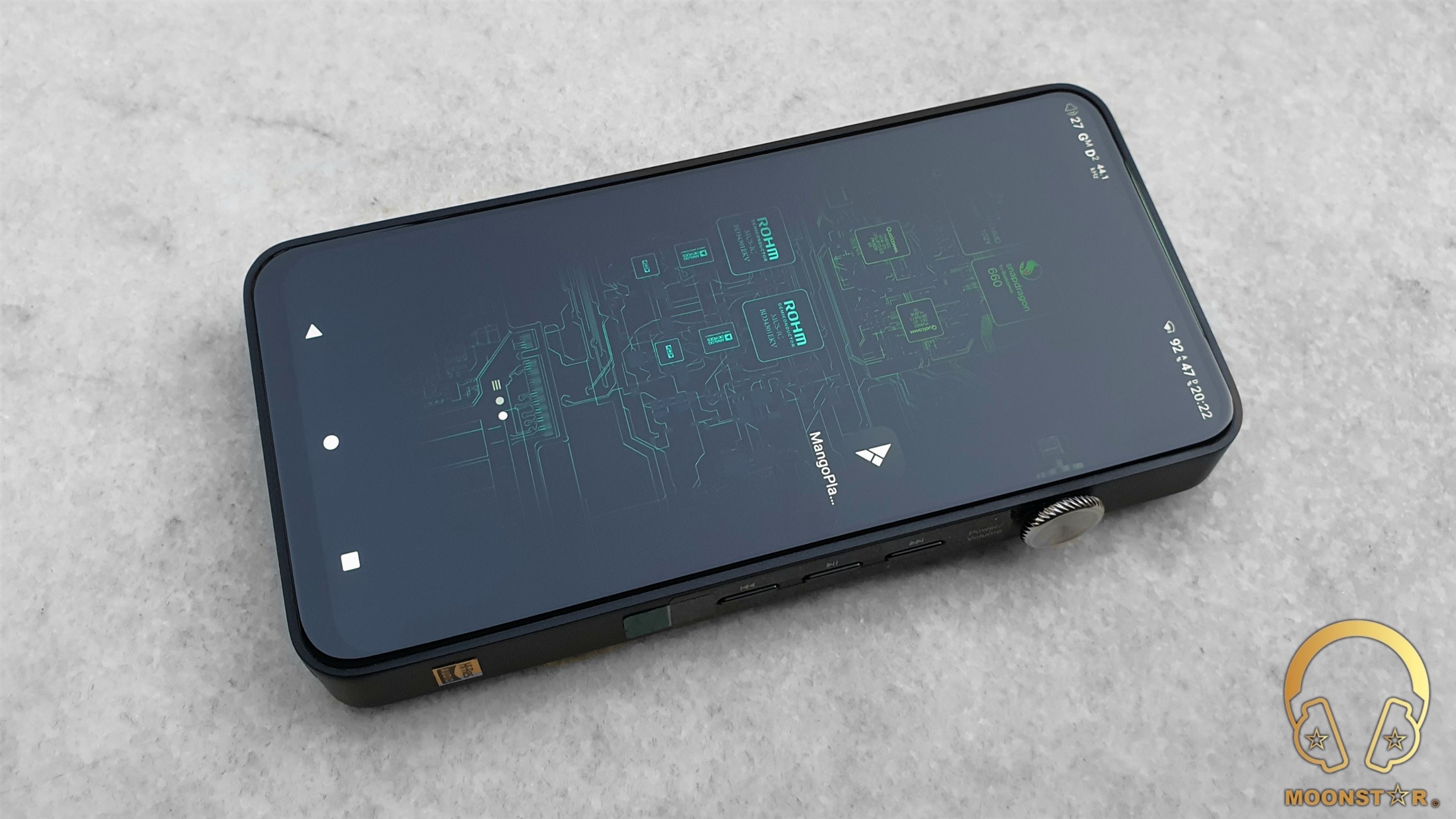
The corners of the screen do have a nice 2.5D curved shape.
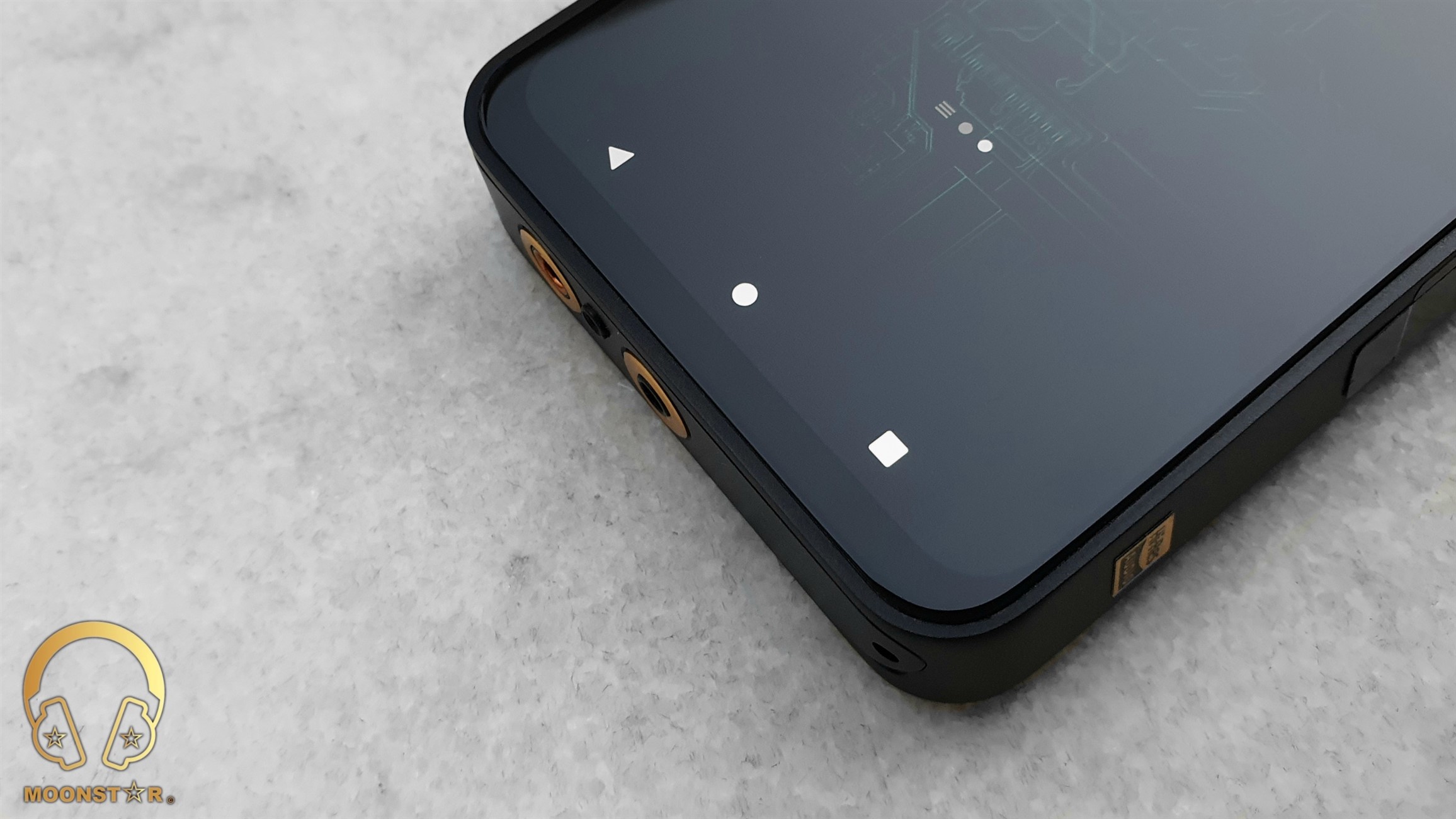
On the top of the screen is also an indicator light on the top of the screen, which gives you information about the working status of the device, clear at a glance.
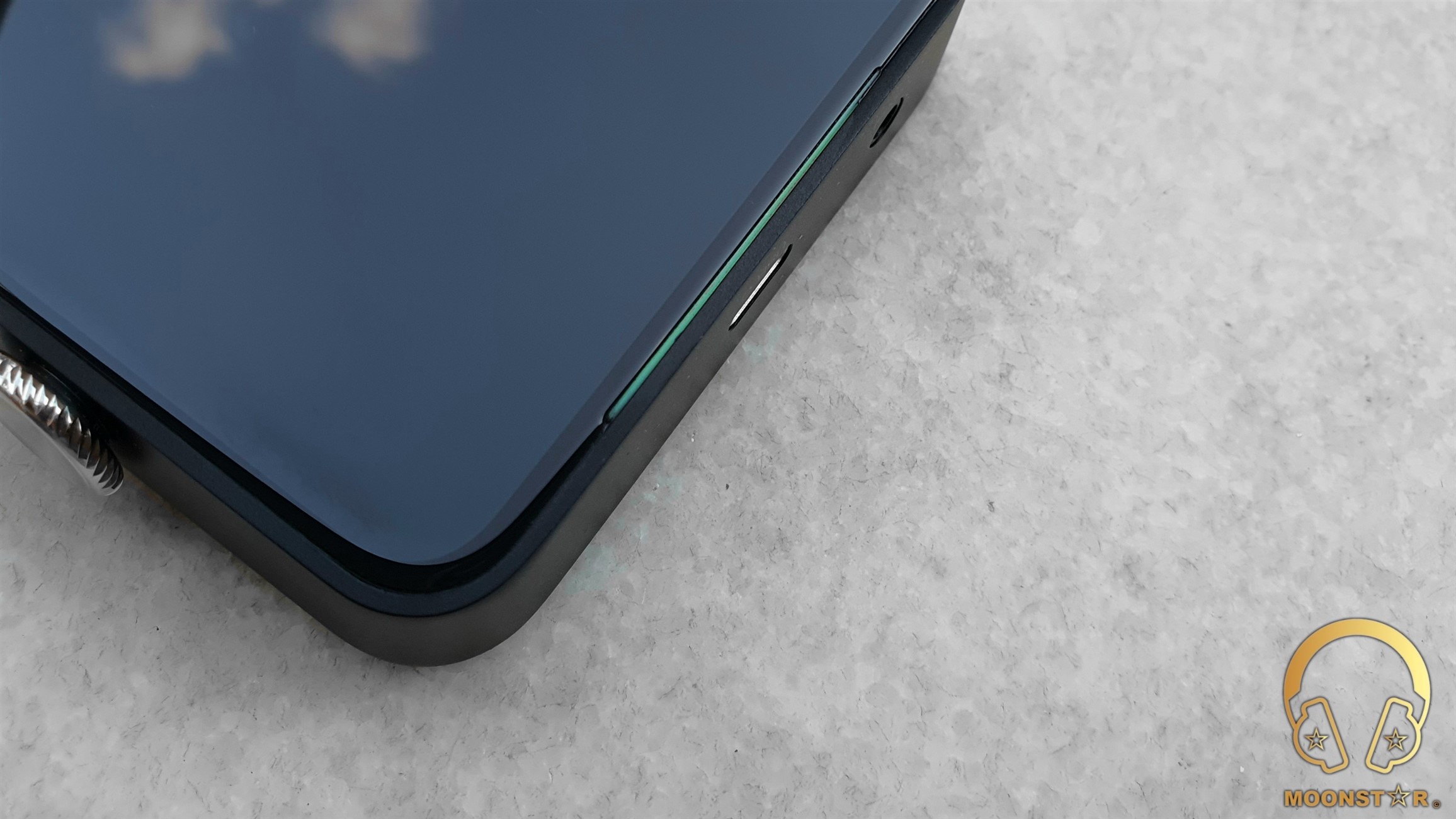
The rear side of the devices sports the iBasso & DX320 branding along with some industrial certifications and the labeling “Reference DAP”. The left and right sides of the rear panel are curved that gives you a better feel of grip.

Here are also two small semi transparent windows that glow in turquoise color when you install the AMP13 Amplifier (sold separately) that has the wonderful “Korg Nutube’s” on it.
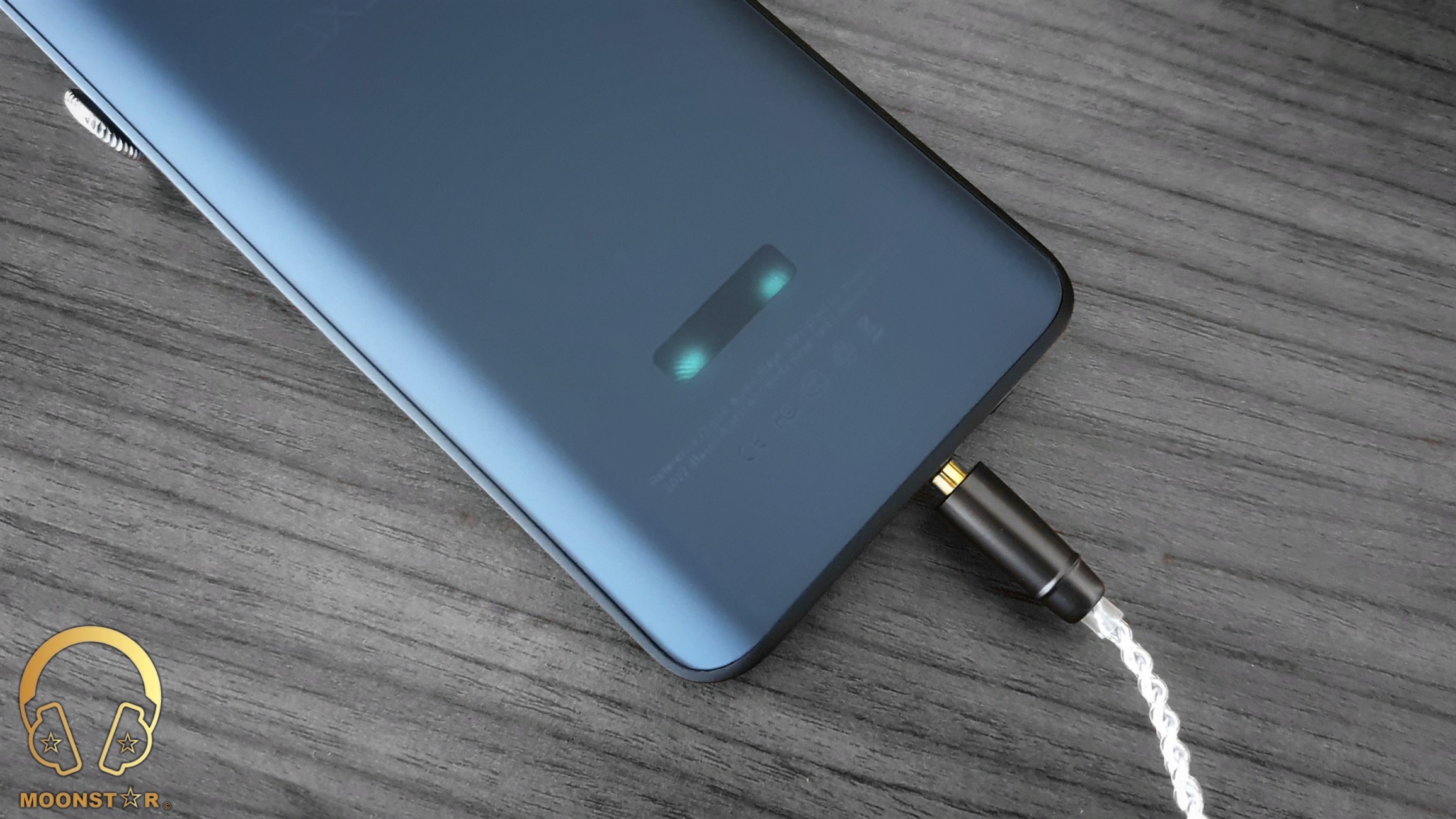
On the left side of the iBasso DX320 is a single micro SD card slot for storage expansion which will supports at least memory cards up to 2TB (MicroSD Cards in SDHC & SDXC format).

At the bottom of the device are the 4.4mm & 2.5mm Balanced Outputs and the 3.5mm Single Ended (TRS) analog outputs of the AMP11 MK2s amplification module, which is based on the popular AMP8 discrete circuit that provides a maximum output power of up to 1200mW @ 32Ω.
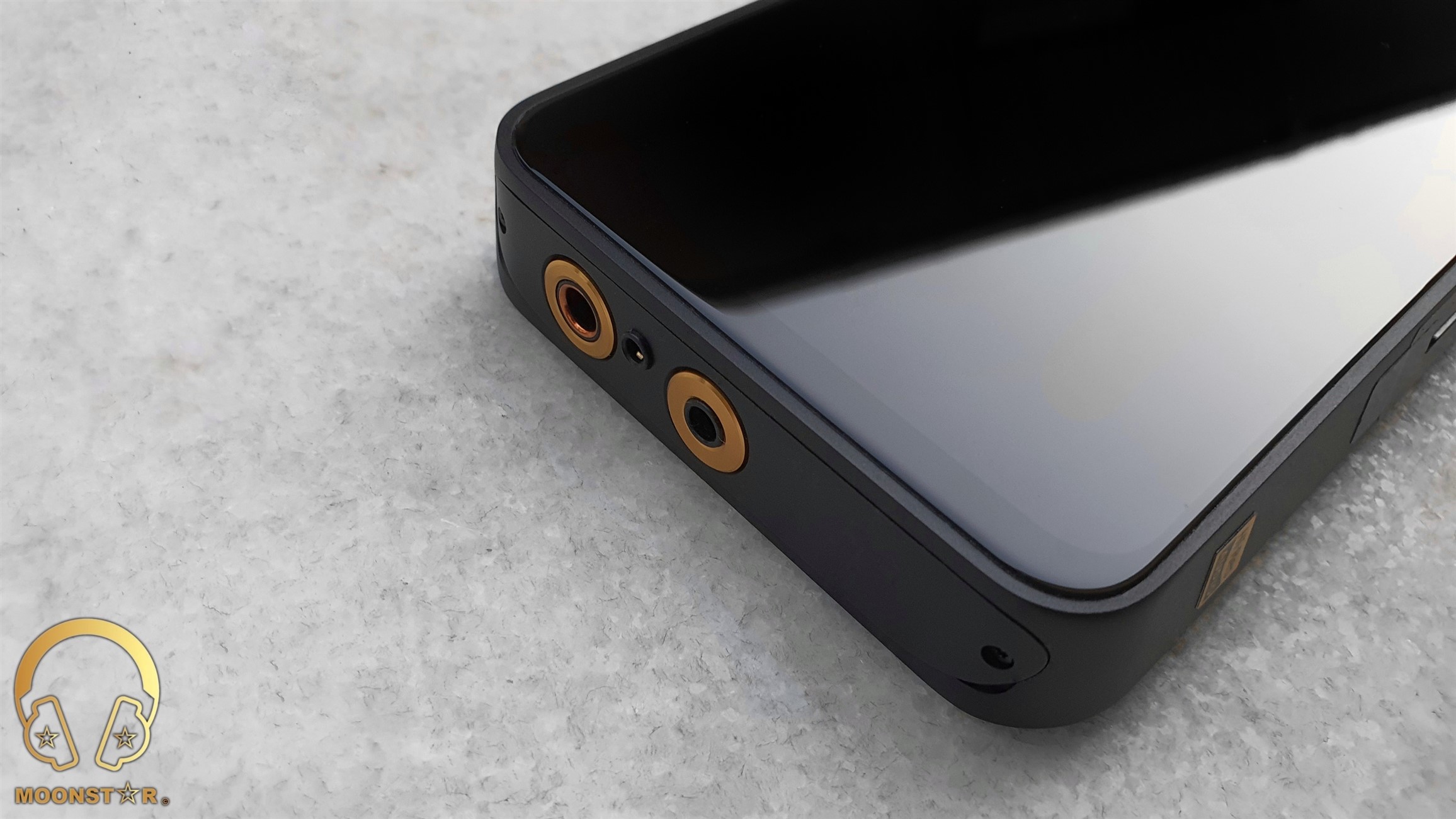
The AMP12 MK2s amplification module is fixed with two screws to the devices that you can easily remove/replace.
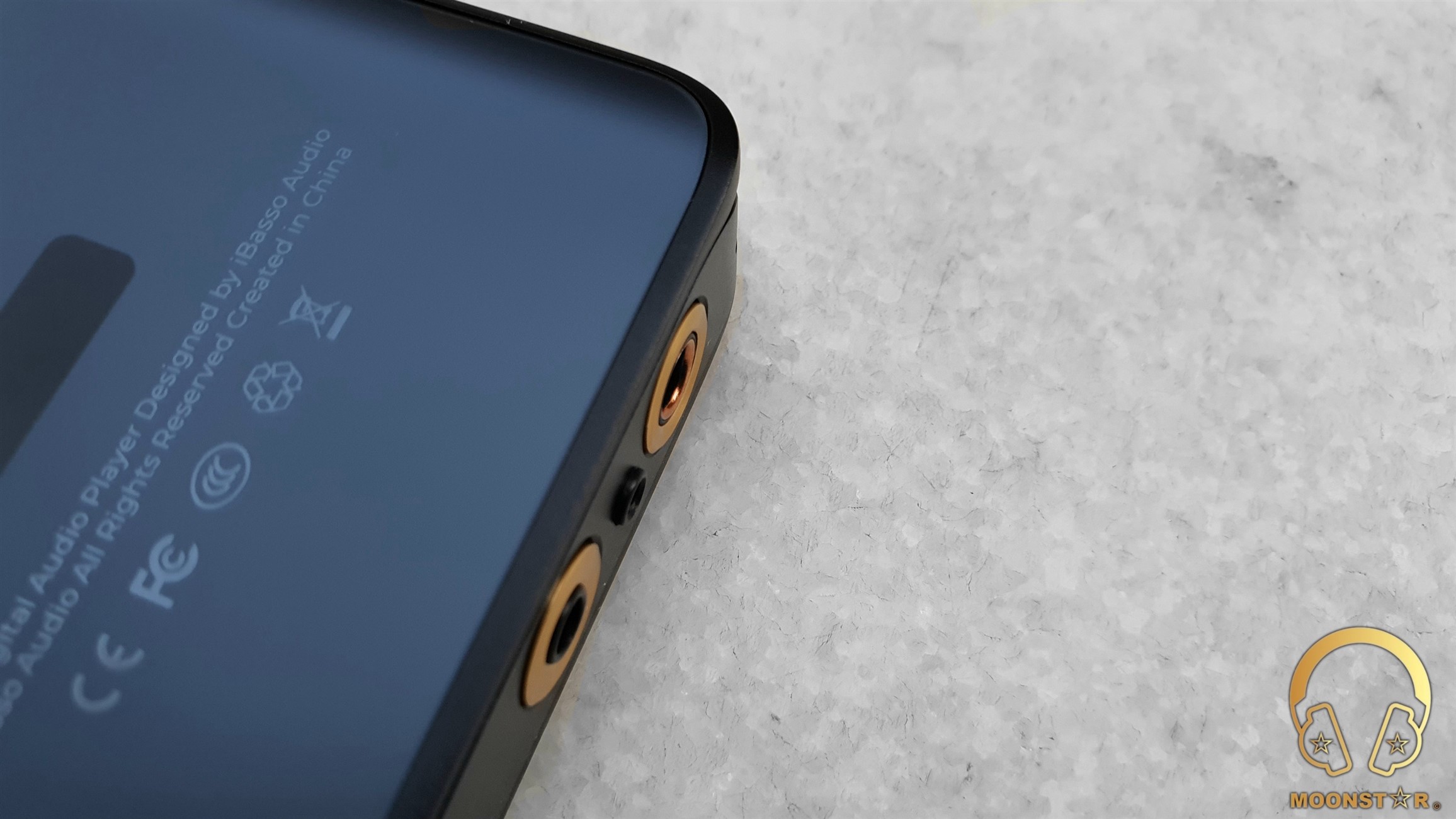
The right side of the device has a slightly angled profile same like the DX300, which features a “Multifunctional Control Wheel” in silver color that has a better grip, feedback and feel compared to the DX300.
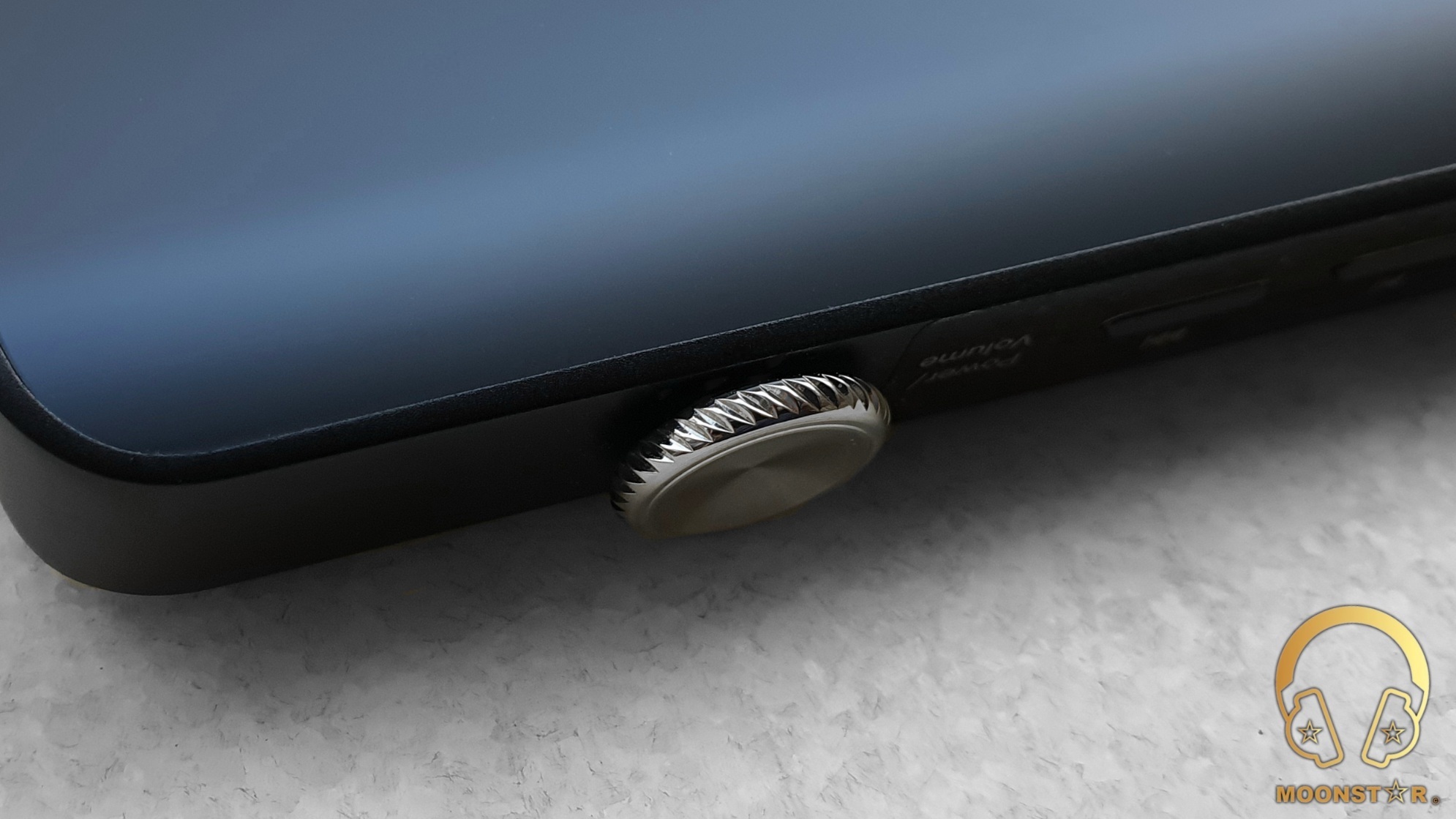
Here are also three physical buttons, which are the next/fast forward, play/pause and the previous/rewind buttons.
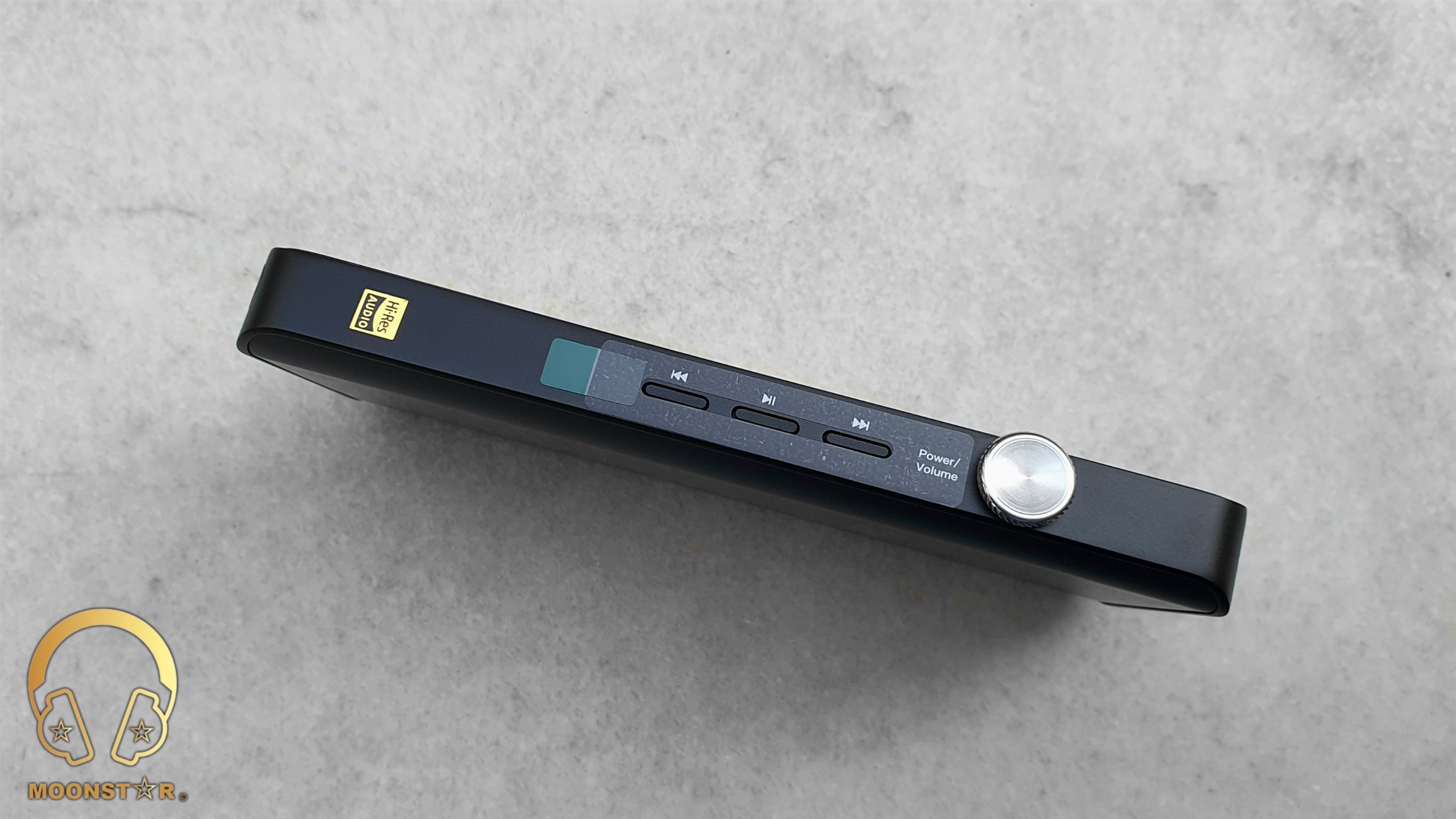
On the top of the device are the Coaxial Out and the multifunctional USB Type-C port that works as Digital Input, Data Transfer & Charging port.
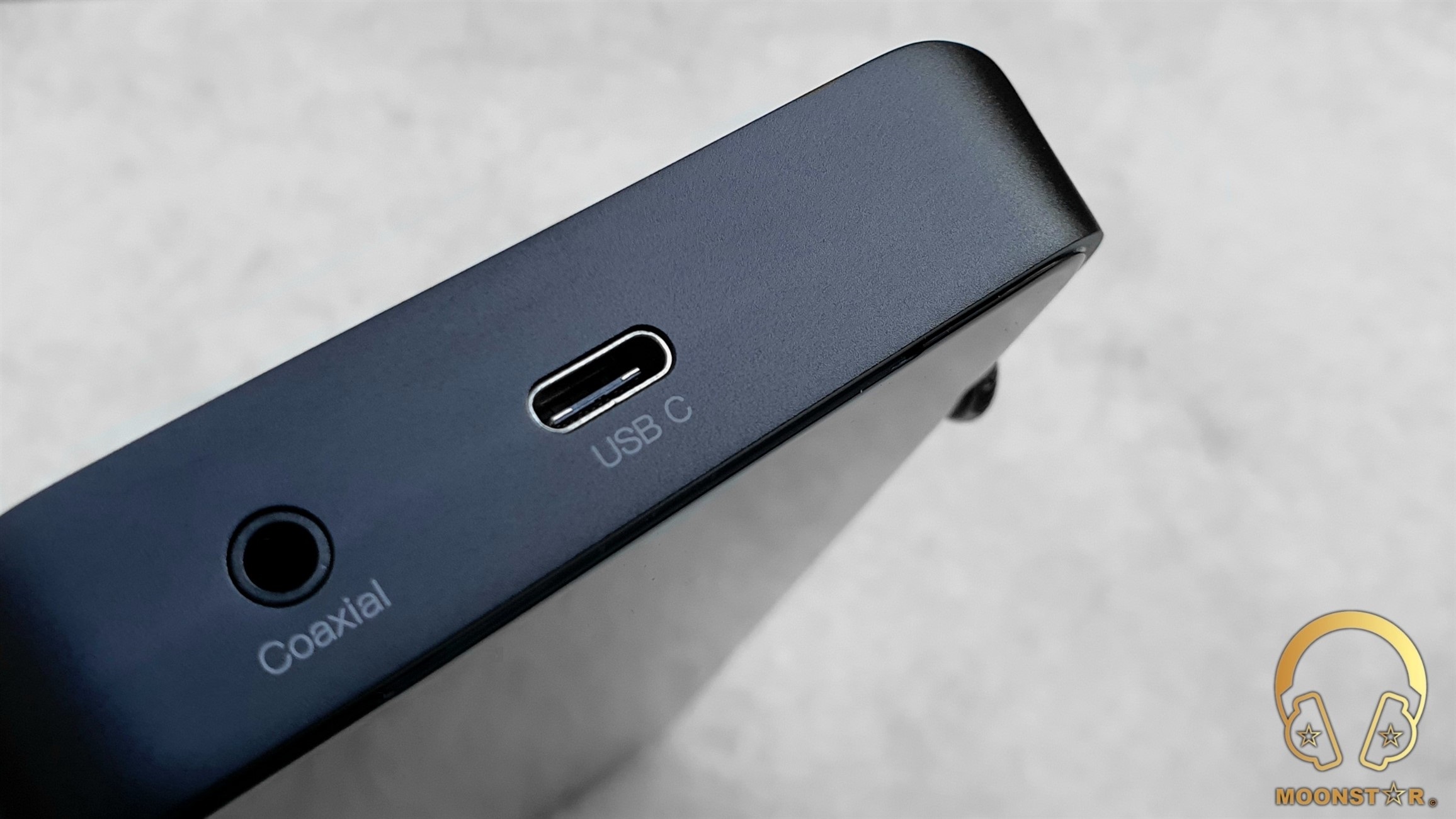
The device fulfils all of my expectation in terms of build quality from a High End device at this price category same like its predecessors that I highly appreciated.
Some Technical Specifications:
- Operating System : Dual OS with Open Android 11 + Mango OS
- Screen : 6.5” IPS Screen with 2340*1080 resolution
- CPU : Snapdragon 660 SoC
- RAM : 6GB LPDDR4X
- ROM : 128 GB
- DAC : ROHM BD34301EKV
- Stock Amp Module : AMP11 MK2s
- Analog Outputs : 4.4mm & 2.5mm Balanced, 3.5mm SE Phone Out/Line Out
- Digital Outputs : 3.5mm Coaxial & USB Type-C 3.1
- Wi-Fi : Dual Band 802.11 b/g/n/ac (2.4Ghz/5Ghz) 2×2 MIMO
- Battery Capacity : 4000mAh Li-Ion for Digital & 2000mAh Li-Ion for AMP Card Section
- Battery Life : up to 10hours Single-Ended (Normal Gain)
- Charging Time : approx. 2.5 Hours with QC3.0 & PD3.0 Quick Charge Support
- Size : 162mm*77mm*17mm
- Weight : 310 gram

Supported Audio Formats:
The iBasso DX320 supports almost any traditional and modern audio format including 16x unfold MQA. The list of supported formats is as follows;
Audio Formats Supported: MQA, APE, FLAC, WAV, WMA, AAC, ALAC, AIFF, OGG, MP3, DFF, DSF, and DXD decoding.
1. Hardware:
The iBasso DX320 is a High End Reference Digital Audio Player (in short DAP), which has impressive hardware specs & features that I will now review for you.
A. ROHM BD34301EKV DAC (Digital to Analog Converter):
iBasso DX320 is a High-End Digital Audio Player that is equipped with a dual DAC chipset with two of the latest launched BD34301EKV DAC chips designed by ROHM Technologies. The BD34301EKV DAC chips are from the latest MUS-IC™ series of premium decoding chips of the company that do offer clean SNR ratio of 125dB (4.4mm Balanced), THD-N of -112dB (4.4mm Balanced) and Frequency response between 10Hz and 40kHz.
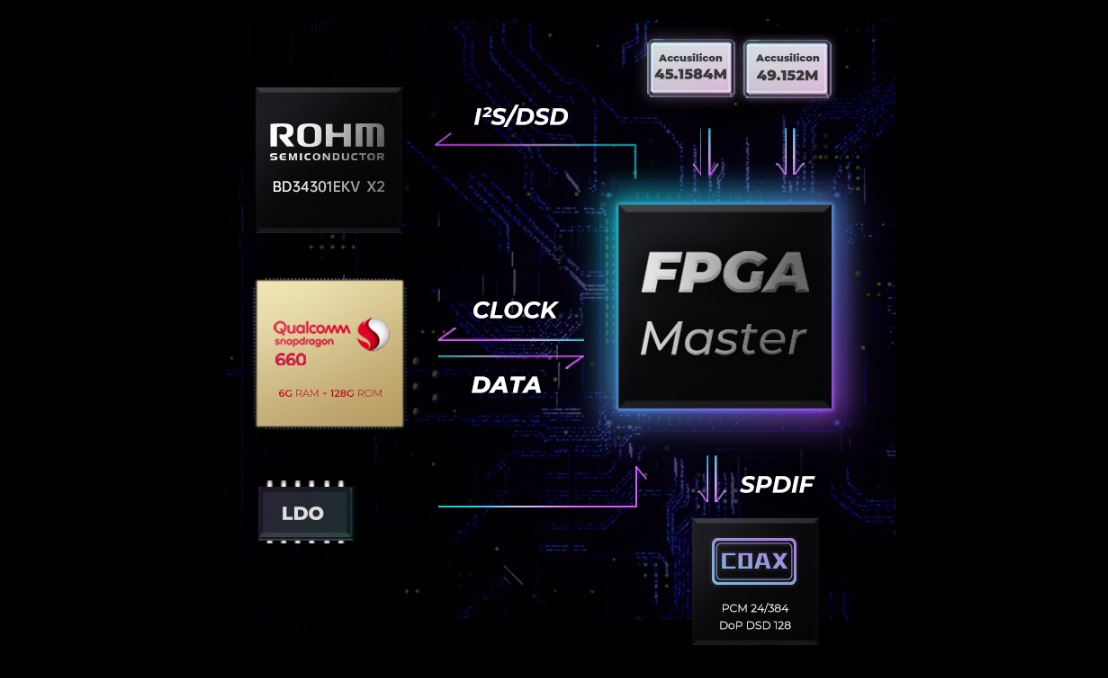
B. USB DAC Function:
The DX320 can be used as USB DAC with Windows PC’s, MAC and Linux Computers. It is driver free on Windows PC, Mac computer, and Linux computer. The DX320 offers up to 32bit/384kHz PCM, and DSD DoP up to 128x when be used as a USB-DAC.
To turn the DX320 in to the USB DAC mode, you need to connect the device to a computer with the USB-C cable. After the DX320 is detected, the soundcard driver will be installed automatically. Now, you can select the DX320 as the audio output device and use it as the USB soundcard.
C. CPU/RAM/ROM:
The iBasso DX320 features Qualcomm’s Snapdragon 660 (SD660), which is a fast mid-range ARM-based SoC (System on A Chip) that features 8 Kryo 260 cores (custom design, 64-Bit capable) that are divided in two clusters. A fast cluster of four cores with up to 2.2 GHz and a power saving efficiency cluster with up to 1.8 GHz. Both clusters can also used together.
In addition to the 8 CPU cores, the SoC integrates a mid range Andreno 512 GPU with a LPDDR4 memory controller (dual-channel 1866 MHz), supports Wi-Fi (802.11ac + MIMO, max. 867 Mbps) and Bluetooth 5.0.
The DX320 is equipped with 6GB of LPDDR4X type RAM and 128GB of ROM (a part of the internal storage are reserved for the Operating System), so that you can store your music files or your installed third party applications.
You can also expand the storage capacity via MicroSD cards with a capacity up to 2TB.
The Snapdragon SD660 is the same SoC that we have seen on models like the DX300 and DX240, which is a major upgrade over the RockChip SoC that was found on previous devices like the DX220, DX200, DX160 and DX150.
D) Wireless Connectivity:
The iBasso DX320 comes with an upgraded Wi-Fi antenna that adopts a 2 x 2 MIMO antenna design that supports the 802.11 b/g/n/ac protocols and 2.4GHz & 5GHz frequency standards.
Moreover, the 320 offers also two-way Bluetooth 5.0 audio transmission and has native LDAC and aptX support, which means that you can send and receive your audio from/to external devices like Headphones/Speakers/Phones/Tablets etc.
The EMI shielding of the device is very good so that you won’t hear any interference’s when you turn on the Wi-Fi or Bluetooth antenna.
E) New AMP11 MK2s Amplifier Module:
The new DX320 comes with iBasso’s latest AMP11 MK2s amplifier module, which is an upgrade over the original AMP11 MK2. It features a 4.4mm Balanced, 2.5mm Balanced and 3.5mm Single Ended phone output setup that do also work as lineout ports.
The AMP11 MK2s was tuned with some electrolytic and film capacitors, including the new custom iBasso Premium AI foil audio capacitors.
The AMP11 MK2s reaches 7.1Vrms and thanks to its independent battery supply, it has a maximum output power of up to 1200mW @ 32Ω and 168mW @ 300Ω, which are quite impressive specs for a Portable Digital Audio Player.

Here are some detailed technical specifications;
4.4MM & 2.5MM Balanced Outputs:
- Maximum output level: 7.1Vrms.
- Power: 1200mW@32Ω, 168mW@300Ω.
- Frequency Response: 10Hz-40kHz +/- 0.3dB
- SNR: 125dB
- DNR: 125dB
- THD+N: -112dB (no load, 2.8Vrms)
- Crosstalk: -120dB
- Output Impedance: 0.38Ω
3.5MM Single Ended Output:
- Maximum output level: 3.5Vrms
- Power: 380mW@32Ω, 40mW@300Ω
- Frequency Response: 10Hz-40kHz +/- 0.3dB
- SNR: 122dB
- DNR: 122dB
- THD+N: -110dB (no load, 2.2Vrms)
- Crosstalk: -114dB
- Output Impedance: 0.34Ω
4.4MM & 2.5MM Balanced Line Outputs:
- Maximum Output Level: 7.1 Vrms
- Frequency Response: 10Hz~40kHz +/-0.3dB
- S/N: 125dB
- Dynamic Range: 125dB
- THD+N: -110dB (no Load, 2.8Vrms)
- Crosstalk: -120dB
3.5MM Single Ended Line Output:
- Maximum Output Level: 3.5Vrms
- Frequency Response: 10Hz-40kHz +/-0.3dB
- SNR: 122dB
- DNR: 122dB
- THD+N: -108dB (no Load, 2Vrms)
- Crosstalk: -110dB
The DX320 shows a decent performance in terms of background noise and clean sound output capability that fulfills my expectations from a High End device.
F. Battery Life:
The DX320 comes with iBasso’s Patented Dual Battery Power Supply Structure same like the predecessor DX300, which has two independent battery sections, one for the Analog Amplifier and one that is dedicated for the Digital components such like DAC, CPU, Screen, etc.
The analog part of the device features a 3.8V Li-Polymer with a capacity of 2000mAh, while the Digital section has a 3.8V – Li-Polymer 4000mAh battery.
The battery life of the digital section is about 8 hours (about 15 -20 minutes of screen on in total, Wi-Fi on), while the battery that is dedicated for the Amplifier offers about 10 – 11 hours (volume 50 out of 100, normal gain, AMP11 MK2s, iBasso IT07).

2. Software & GUI (Graphical User Interface):
The iBasso DX320 comes with a Dual OS system same like the DX300 and DX240. The one is a self developed Linux Based Operating System created by iBasso that is called ManogOS. The main OS is the Open Android OS that is slightly customized by the iBasso software team. It is based on Android 11 and brings the flexibility to download third party applications such like Spotify, Qobuz, Tidal and more, while the Mango OS delivers a pure music experience.
The Android OS of the DX320 doesn’t comes with any Google Services such like the Play Store, Play Music, etc. but it offers two preinstalled “Play Store” alternatives, which are the CoolApk and APKPure applications.
On the home page is the widget of the Mango Player, which is an iBasso exclusive application with lots of features. The widget shows information such like album cover, song title, remaining time and buttons like play/pause, previous/rewind & next/fast forward.
The Mango Music Player application looks similar to those of the DX300 and has a nice looking UI design with some settings shortcuts Gapless (On/OFF), Gain, Play Mode, Equalizer (supports Parametric EQ), L/R Balance, Digital Filters etc.
The Android OS offers some nice and pretty familiar benefits like the “Top Navigation Bar” for a quick access to your Wi-Fi or Bluetooth connection. In addition there are also some helpful shortcuts like PO/LO/SPDIF out switcher or Battery Saver (switch on/off).
On then bottom of the home screen are the classical navigation button like the back (triangle), home (circle) and task manager (square).
The settings menu is quite simple and many of us who are using or have used an Android device will feel very familiar with the menus and UI of the settings menu.
The Audio Settings Menu gives you access to settings like, Gain (High, Low), Digital Filter (2 filters in total), Volume Limitation, Volume Wheel Settings, etc.
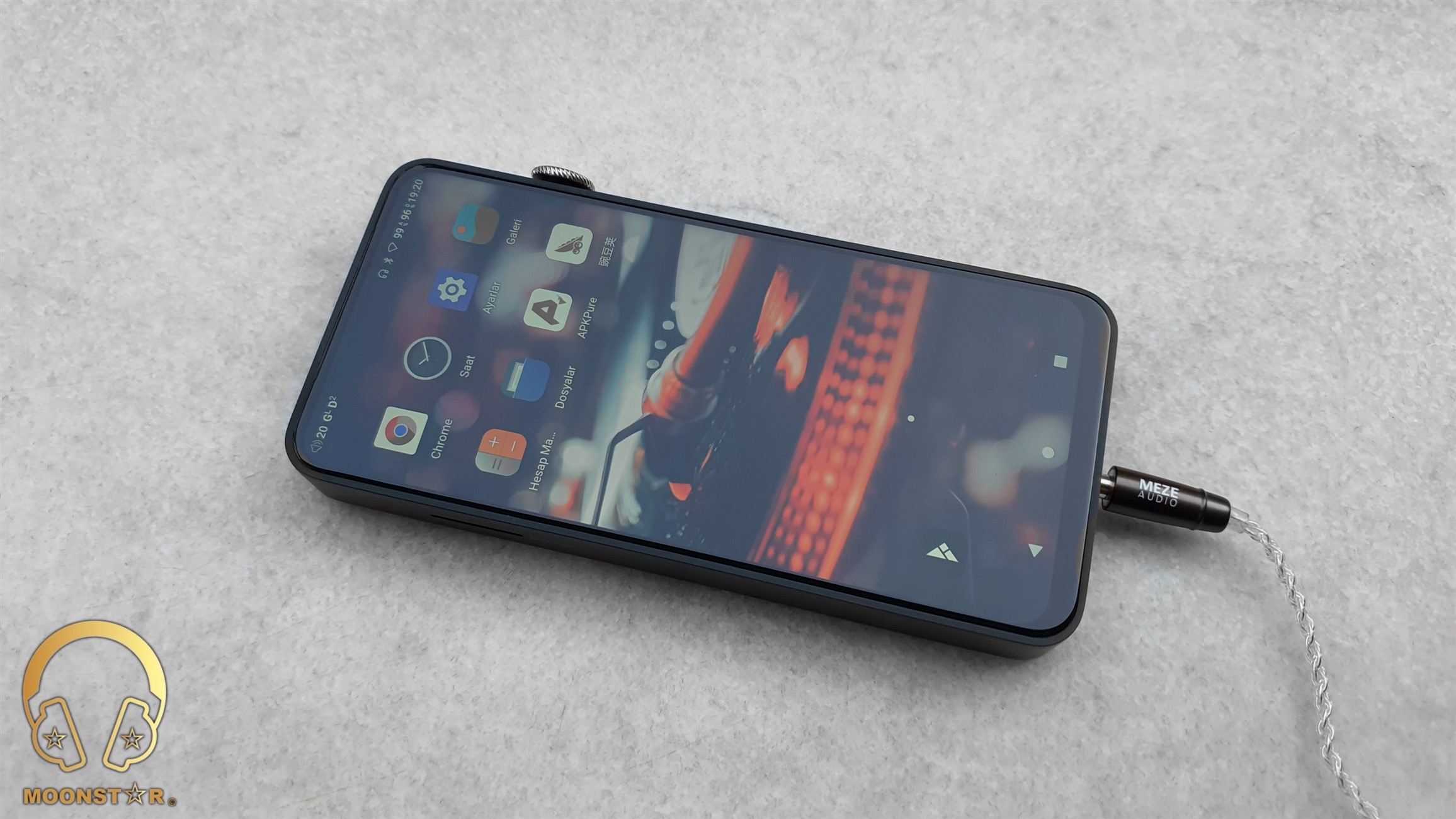
Other Remarkable Features:
A) Self-Developed FPGA Master Technology:
iBasso DX320 features their self-developed FPGA Master technology that requests signals directly from the SoC. It is incorporated by two independent NDK Femtosecond crystal oscillators in maintaining a stable signal with low jitter and high definition.
B) Full 16x MQA Decoding:
Master Quality Authenticated or in short MQA is a high-resolution data format that is encapsulated in small files. MQA certified devices can unfold the files properly to archive a higher sound performance compared to regular music files such like MP3 or WAV. The iBasso DX320 supports full MQA unfolding up to 16x
Equipment’s used for this review:
- DAP’s : iBasso DX320, iBasso DX300, HiBy RS6
- Erphones : iBasso IT07, Campfire Audio ARA, Meze Audio ADVAR
- Headphones : iBasso SR2, HiFiMAN Edition XS

Albums & tracks used for this review:
- Adele – My Little Love (Spotify)
- Randy Crawford – On Day I Will Fly Away (Flac 16bit/44.1kHz)
- Hayley Westenra – Odyssey Album (Dezzer HiFi)
- Dionne Warwick – Walk On By (Flac 16bit/44.1kHz)
- Sarah McLachlan – Angel (Flac 24bit/48kHz)
- Sertap Erener – Aşk (Flac 16bit/44.1kHz)
- Edith Piaf – Non Je Ne Regrette Rien (Flac 16bit/44.1kHz)
- Diana Krall – So Wonderful (DSF)
- Aretha Franklin – I Say A Little Payer (Flac 24bit/96kHz)
- Sonya Yoncheva – (Giuseppe Verdi) II Trovatore, ActI (Flac 24bit/96kHz)
- David Bowie – Heroes (Flac 24bit/192kHz)
- Elton John – Rocket Man ((Flac 24bit/96kHz)
- Barry White – Just The Way You Are (Flac 24bit/48kHz)
- Isaac Hayes – Walk On By (Flac 16bit/44.1kHz)
- Sting – Englishman in New York – (Flac 24bit/48kHz)
- Eric Clapton – Wonderful Tonight (Flac 24bit/96kHz)
- B.B. King – Riding With The King (Tidal Hi-Fi)
- Dave Gahan – Kingdom (Tidal Hi-Fi)
- U2 – Sunday Bloody Sunday (Flac 16bit/44.1kHz)
- Bro Safari, UFO! – Drama (Deezer HiFi)
- Armin Van Buuren – Vini Vici (Flac 16bit/44.1kHz)
- Really Slow Motion – Deadwood (Deezer HiFi)
- Jo Blankenburg – Meraki (Spotify)
- Lorde – Royal (Flac 24bit/48kHz)
- Toutant – Rebirth (Deezer HiFi)
- Portishead – It Could Be Sweet (Spotify)
- Charly Antolini – Duwadjuwandadu (Flac 24bit/192kHz)
- Ferit Odman – Look, Stop & Listen (Flac 24bit/192kHz)
- Chopin – Nocturn No. 20 In C-Sharp Minor (Flac 16bit/44.1kHz)
- Fazıl Say – Nazım Oratoryosu (Live) (Flac 16bit/44.1kHz)
- Vivaldi – Le QuarttroStagioni “The Four Season” (Deezer HiFi)
- Otto Liebert& Luna Negra – The River (Flac 24bit/192kHz)
- Lunatic Soul – The Passage (Flac 16bit/44.1kHz)
- Deftones – My Own Summer (Shove it) (Flac 16bit/44.1kHz)
- Metallica – Sad but True (Flac 24bit/96kHz)
- Opeth – Windowpane (Flac 16bit/44.1kHz)
- Megadeth – Sweating Bullets (Tidal Hi-Fi)
- Rush’s – Leave That Thing Alone (Flac 16bit/44.1kHz)
- Slayer – Angel of Death (Spotify)s
- Liquid Tension Experiment 2 – Acid Rain (Spotify)
- Yosi Horikawa – Bubbles (Spotify)
The Sound:
The first things that you will immediately notice when you start listen to the iBasso DX320 is its very natural, expansive and effortless sound presentation. The level of technicality and sense of layering of the whole sound spectrum is very impressive.
It has a close to neutral tonality with a tad or warmness that adds the general presentation a nice musical atmosphere. When it comes to the frequency response, I can say that the DX320 shows a fast and highly dynamic bass response with decent grade of layering and authority. The midrange sounds airy, highly transparent and detailed when I listen to voices and as well as to passages with lots of instruments. The treble range on the other hand is shown excellent performance in terms of extension, clarity, definition and resolution from the presence up to the upper treble areas.
PS: This review has been written after a burn-in period of about 120 hours. The sound impressions below are based on my impressions with the stock AMP11 MK2s amplifier module paired with IEM’s like the iBasso IT07, Campfire Audio ARA and Meze Audio ADVAR and Headphones like the iBasso SR2 and HiFiMAN Edition XS..

Bass:
What I do hear in the lower frequency region with my test gears (iBasso IT07, Meze Audio ADVAR, iBasso SR2, Campfire Audio ARA) is a pretty natural, nicely layered, clean and detailed bass response with great sense of subbass decay, and midbass impact, authority and extension.
The subbass area of the iBasso DX320 shows a pretty organic and mildly warm tonality with decent sense of depth, rumble and control while listen to my reference tracks such like Massive Attack’s “Angel”, Lorde’s “Royals” or Bro Safari UFO’s “Drama”.
The midbass region is reproduced with an impressive grade of impact, speed and resolution. Instruments form kick drums to bass guitars, from tubas to toms are reproduced in a pretty natural and detailed manner.
The general level of clarity, speed and control of the DX320 when I do listen to complex passages form Charly Antolini’s “Duwadjuwandadu” or Gogo Penguin’s “Raven” is outstanding especially when paired with the Meze Audio ADVAR and iBasso IT07.

Midrange:
The iBasso DX320 shows a mildly warm midrange tonality, while the sense of clarity and resolution are on a very high level that fulfills my expectations from a High End Digital Audio Player at this price level. The midrange has pretty airy and spacious atmosphere that creates ideal conditions for a precise separation of instruments in songs with complex passages.
The lower midrange of the DX320 shows a decent grade of depth and body, when I do listen to male vocals or to instruments like trumpets, violas or acoustic guitars. Male vocals from Barry White to Elton John, from Isaac Hayes to David Bowie are reproduced in a highly intimate and emotional manner that I very enjoyed during my auditions.
When it comes to the upper midrange of the DX320, I can say it offers a good amount of clarity, crispiness and resolution that was pretty audible while listen to female vocals like Adel, Edith Piaf and Diana Krall or to instruments such like a side flute, violin or piano. Songs such like Megadeth’s “Sweating Bullets” or Slayer’s “Angel” is represented in a pretty controlled manner in moments when guitars are played with high level or distortion.
The general midrange character of the iBasso DX320 can be described as pretty lush, detailed and musical, while listen to both vocals and instruments.
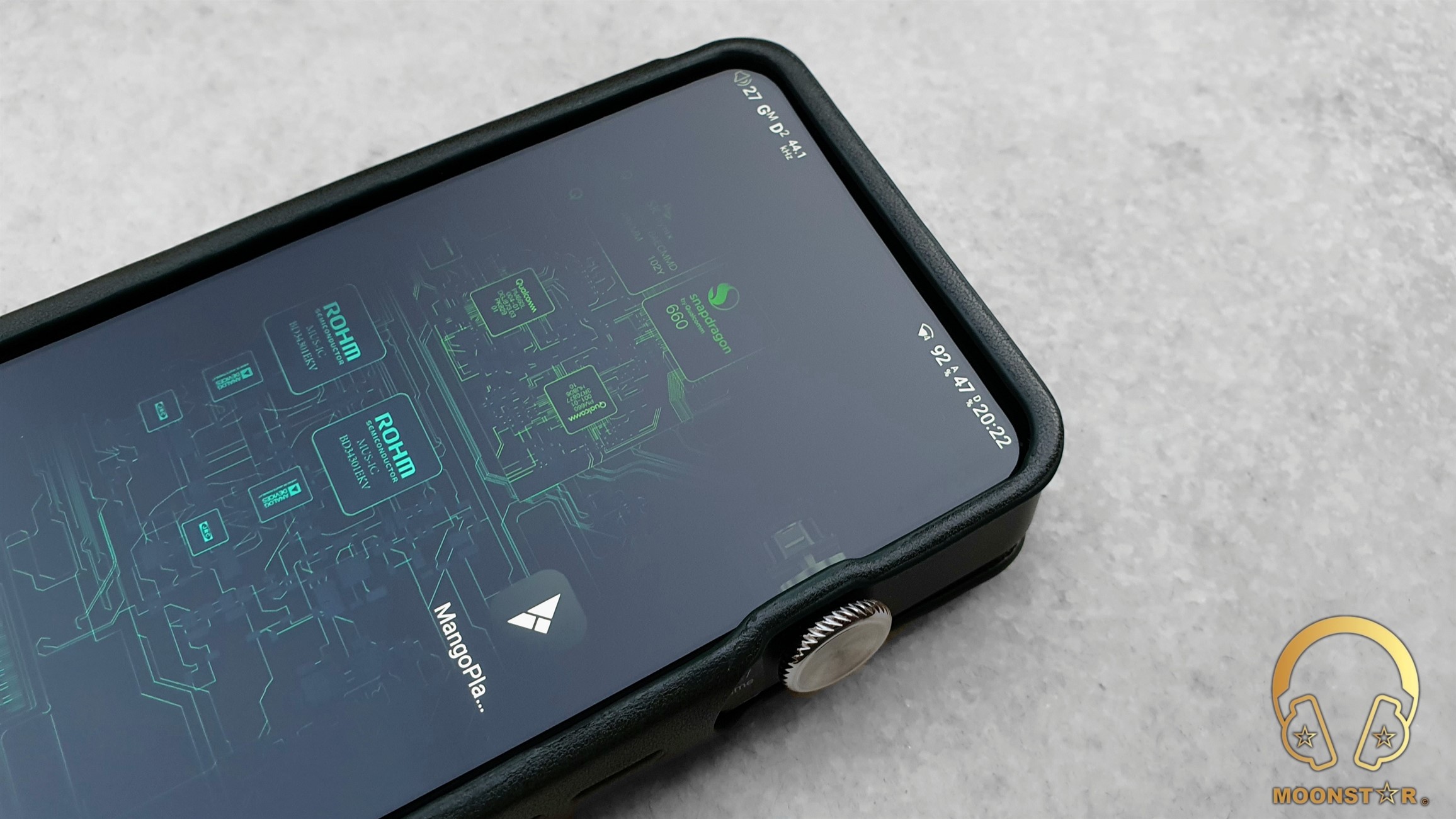
Treble:
The iBasso DX320 has a treble presentation that sounds highly detailed and natural from the presence up to the brilliance. The transitions fro the upper midrange towards this area are pretty controlled in moments when instruments such like an electro guitars creates a high level of distortion.
The treble extension is one of the highlights that the DX320 offers. Instruments for example such like a snare drums, cymbal or piano are shown with a decent level of extension, without to have any early roll-off when I do listen to it with the Campfire Audio ARA or iBasso IT07. The extension in moments when you can hear the cymbal hits are pretty comfortable and controlled.
The treble range of DX320 has an excellent adjustment in terms of quantity and intensity that is neither too weak nor too high, which makes the overall treble presentation as natural as possible. The lower treble region is nicely pronounced that is able to create a good sense of clarity with all earphones and headphones that I have listened to it.
The upper treble region is shown in a pretty natural and organic manner that is able to produce an superb level of airiness and sparkle, when I do listen to instruments like hi-hats, sax and cymbals, or to soprano voices such like Sertap Erener or Sonya Yoncheva with the HiFiMAN Edition XS (Headphone) or Campfire Audio ARA (IEM).

Soundstage, Imaging & Background:
The iBasso DX320 has a very clean and dark background, which creates ideal conditions to focus on the smallest micro-details that are possibly audible in your songs. The soundstage shows a pretty natural expansion that offers a good sense of airiness. The separation and placement of both instruments and vocals is excellent, while the depth and wideness of the stage fulfills my expectation form a High End DAP at this price range.
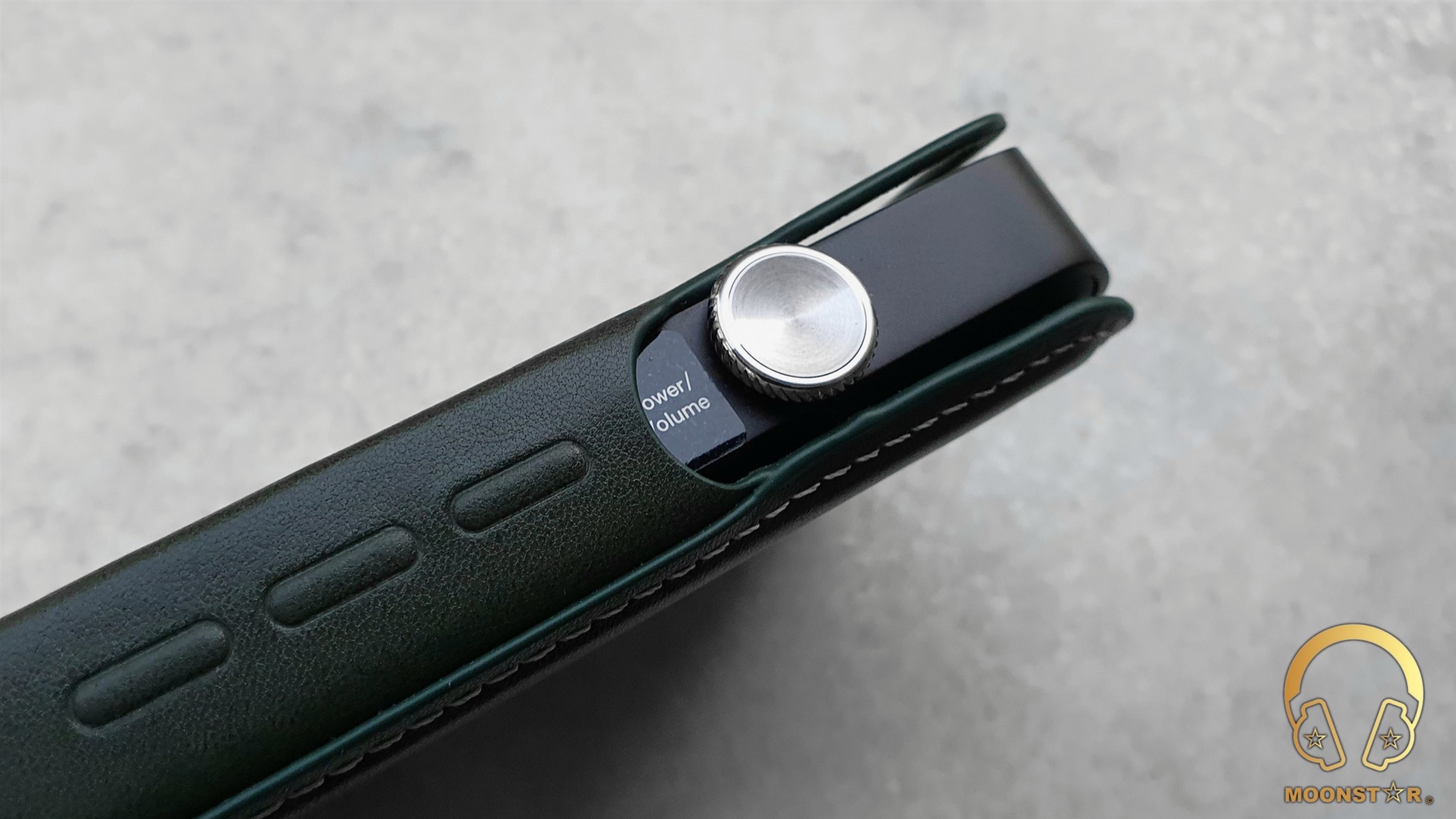
Some Comparisons:
iBasso DX320 (AMP11 MK2s) versus iBasso DX300 (AMP11 MK2)
The iBasso DX300 and DX320 are like twins when it comers to the design size and overall appearance. The main difference is the multifunctional volume wheel/knob design, the finish of the rear cover and two small windows that are visually dedicated for the AMP13 amplifier module that is equipped with two Korg Nutube’s that will glow in turquoise color.
The more dramatic update came to the DAC (Digital to Analog Converter) section. The DX300 is equipped with Quad CS43198 flagship DAC’s from Cirrus Logic, while the DX320 comes with ROHM’s BD34301EKV DAC’s that are from the latest MUS-IC™ series of premium decoding chips of the company. Another difference is the updated AMP11 MK2s that comes with the DX320, which features iBasso’s Premium AI foil audio capacitors.

When it come to the sound comparison of these two devices, I can say that the new DX320 sounds slightly richer in all frequency regions, shows a more spacious atmosphere and has also a slightly advantage when it comes to the micro overall detail retrieval. The DX300 with its stock AMP11 MK2 module sounds slightly less transparent and airy, while the difference is not very high but pretty audible.
The lower frequency region of the DX320 sounds punchier, has a bit more depth and dynamism, and shows also a slightly better sense of layering, while the grade of control is fairly similar on both devices.
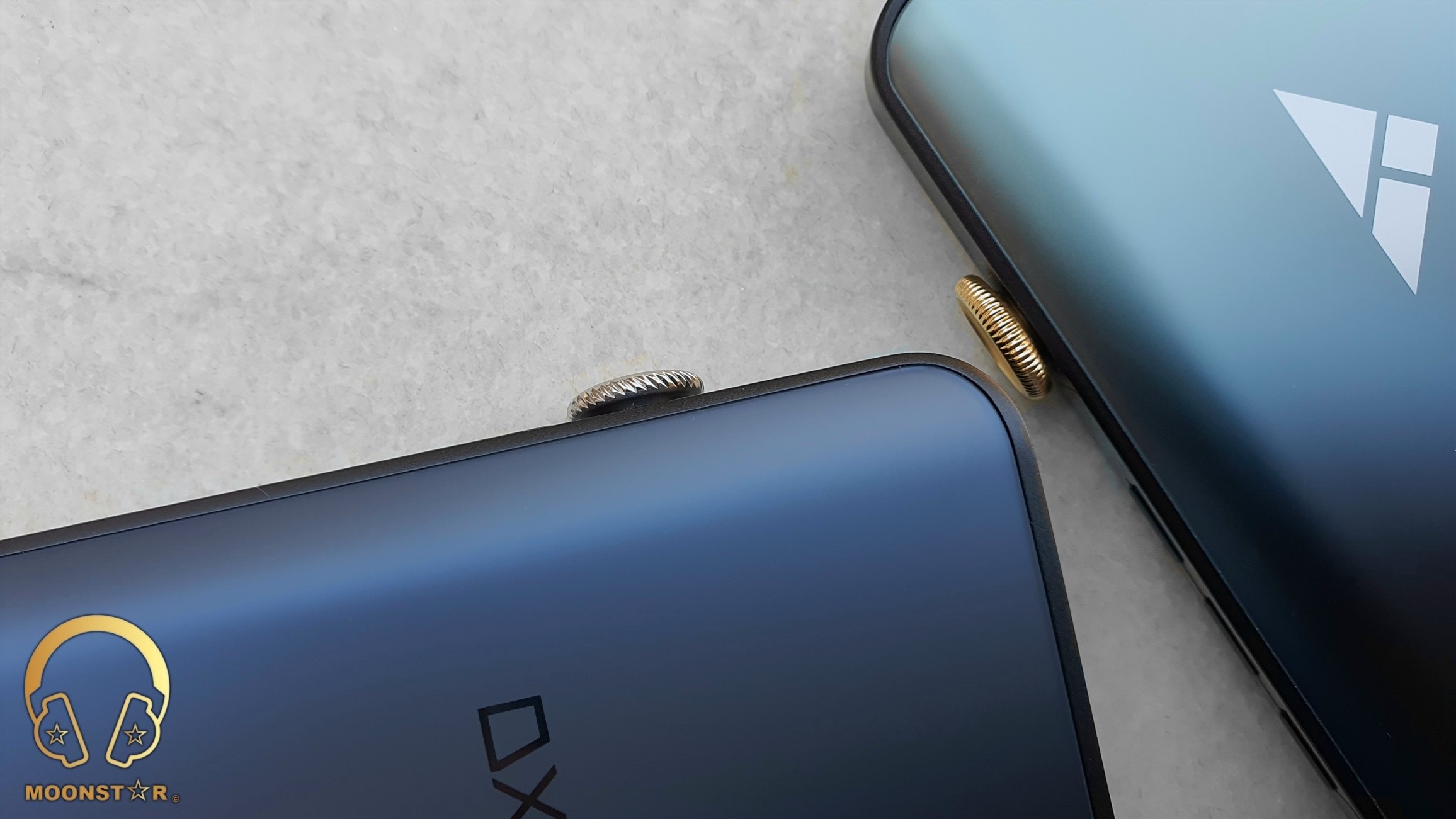
The midrange of the DX320 sounds slightly more natural, transparent and airy compared to the DX300, which seems to have a bit more warmth and coloration in this area. The lower midrange of the DX320 shows a tad more body and depth while listen to male voices or to string instruments. The upper midrange of the DX300 shows slightly less clarity and extension when I do listen to pianos, violins and flutes, or to female vocals like Adel or Diana Krall.
Both the DX320 and the DX300 do show a decent performance when it comes to the treble response. The DX320 offers a slightly higher sense of clarity and definition in the lower treble register. The DX320 has also the edge when it comes to the airiness, resolution and exertion in the upper treble register.
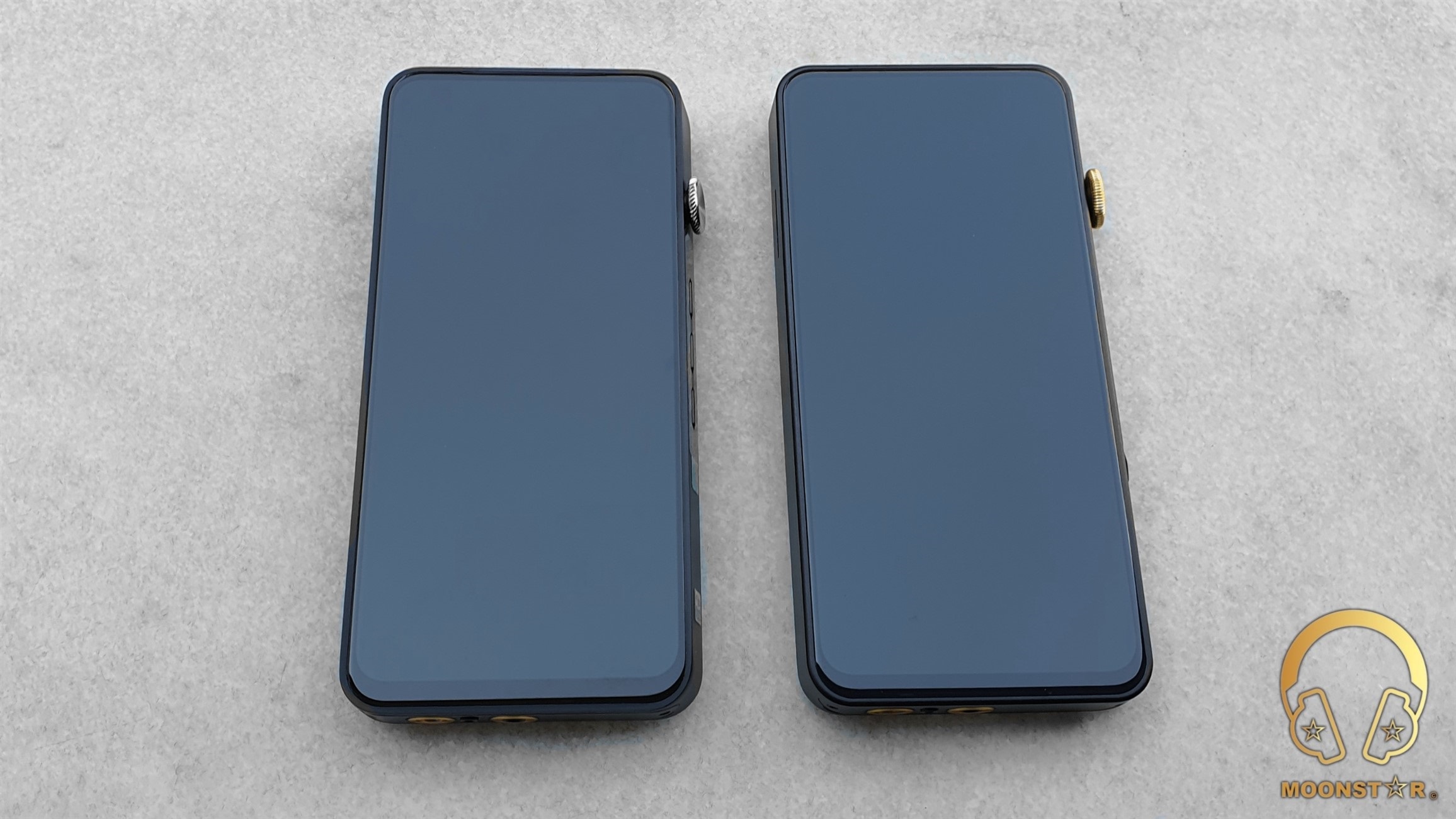
Both devices do offer a pretty expansive soundstage atmosphere that is ideal for a precise placement for vocals and instruments. However, the DX320 is the king when it comes to the wideness and depth of the stage.
iBasso DX320 (AMP11 MK2s) versus HiBy RS6:
The HiBY RS6 with its R2R DAC architecture has a tad warmer and smoother overall presentation compared to the iBasso DX320, which is equipped with a brand new ROHM BD34301EKV, which has a slightly closer to neutral tonality and decent level of dynamics.
Both the subbass and the midbass regions of the iBasso DX320 do show a slightly better sense of depth, clarity and speed/decay, while both devices are pretty similar when it comes to the control/authority in the lower frequency region.
The midrange of the HiBy RS6 is a bit warmer in terms of tonality and has also a slightly smoother overall presentation in this area. The iBasso DX320 on the other hand shows a more organic and relative close to reference tuning. The DX320 is superior when it comes to the level of transparency, airiness and resolution in both the lower and upper midrange regions.
The upper midrange and treble region of the iBasso DX320 is slightly more pronounced and has dynamic in direct comparison to the HiBy RS6, which has a tuning with softer edges. The DX320 is superior in terms of upper midrange resolution and treble extension, while both are pretty equal when it comes to the control in these regions, which was clearly audible when instruments do play with high level of distortion.
Both the iBasso DX320 and the HiBy RS6 do offer a quite precise separation and placement of instruments and vocals. However, the iBasso DX320 has the upper hand when it comes to the sense of airiness and space, as well as the depth and wideness of the stage.
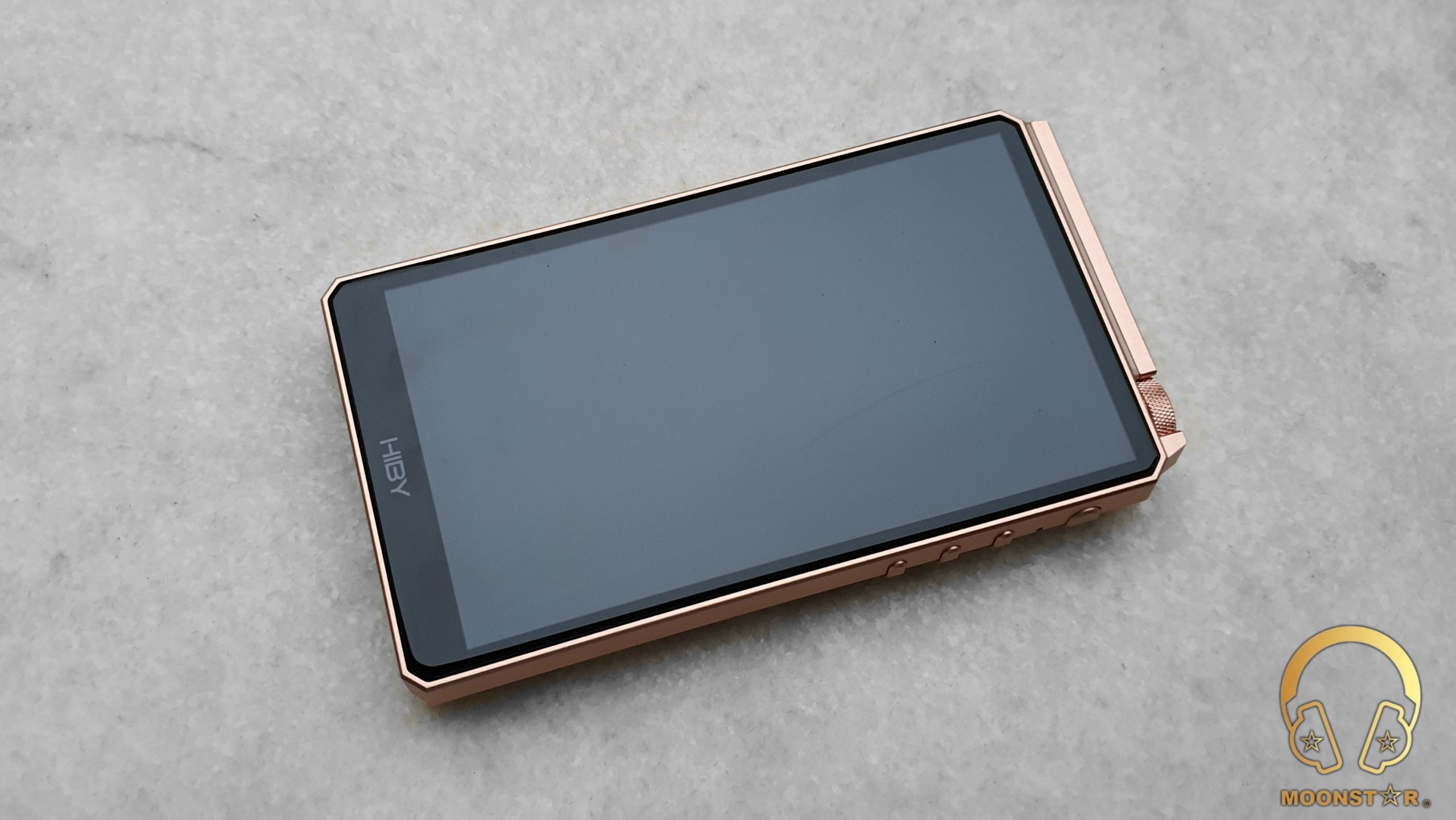
Conclusion:
The all-new iBasso DX320 is a gorgeous looking flagship portable audio player with a 6.5-inch big screen with 2340×1080 resolution that takes all the good qualities of its predecessor, the DX300. It comes with the new ROHM BD34301EKV DAC chip, a updated AMP13 MK2s amp module and a redesigned multi-functional volume knob. But what really stand out about this true high-end player are its excellent technical sound performance and its very natural overall presentation, which immediately impressed me.
Pros and Cons:
- + Excellent Technical Performance
- + Impressive Level of Resolution form the Lows up to the Highs
- + Overall Tonality and Timbre
- + Soundstage Expansion & Imaging
- + New AMP11 MK2s sounds very Organic & Versatile
- + Gorgeous Looking Screen & Fast UI
- + BD34301EKV, Quick Charge, LDAC, MQA
- – Battery Duration of the Digital Section could be a bit better
- – Multifunctional Volume Knob/Wheel design of the DX240 is still better
- – The grip of the device is good, but is not as compact as the DX160, DX220 or DX240
Thank you for the Read!

